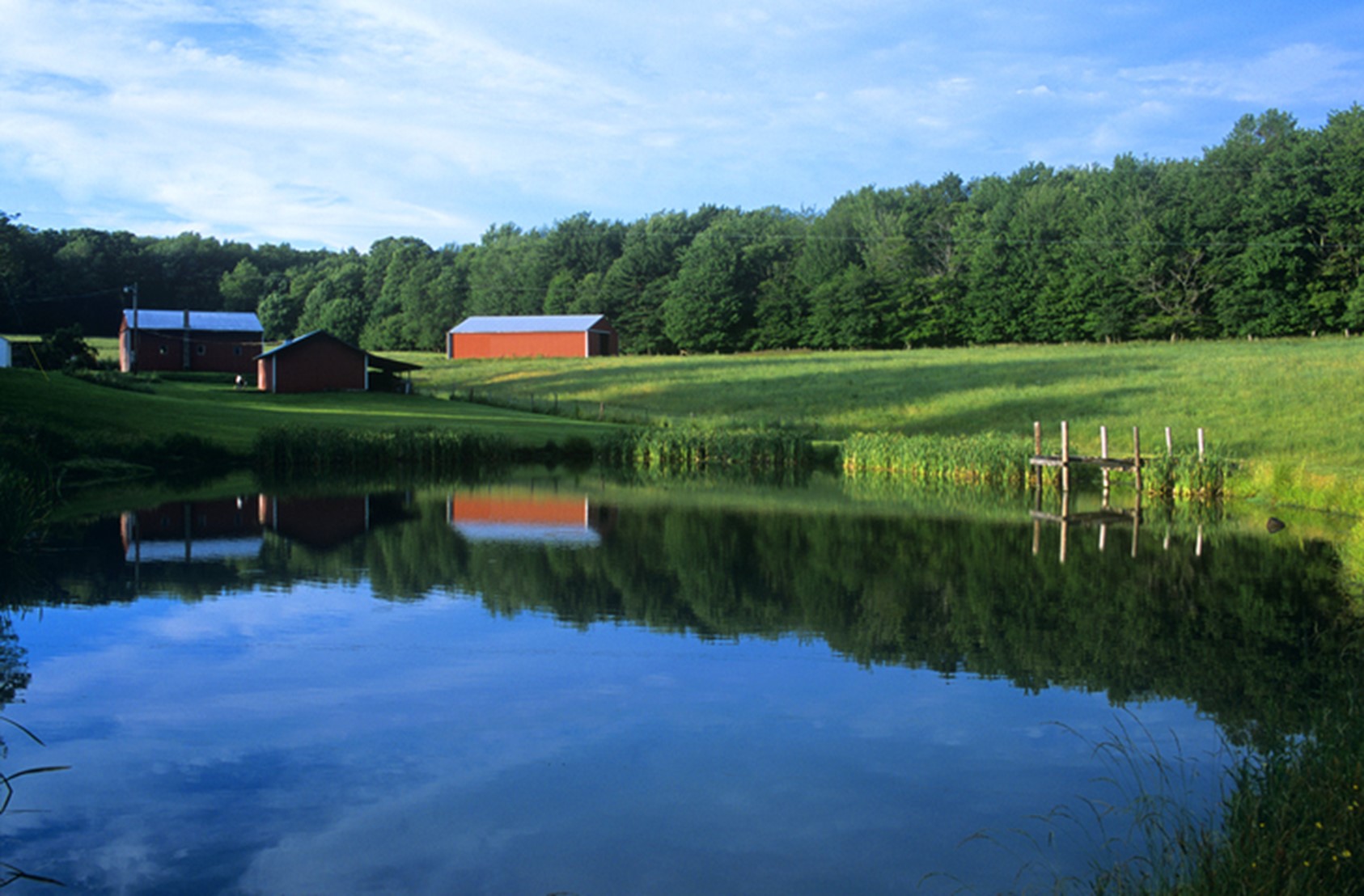
Few things in life are as exciting as buying a piece of recreational land. Instant visions of hunting on a cool fall day or fishing on a warm summer evening come to mind. Imagine how excited kids will be as they catch their first fish and how envious friends will be knowing that your pond is the best fishing in the county. The reality is that “good fishing” doesn’t happen by accident. It takes time, effort, and a long-term plan. But it will all be worth it when you sit down to that first fish fry.
It Starts with Water Quality
The first step landowners should take when establishing a new pond or improving an existing pond is to take a sample of the water and have it analyzed. Regular water testing can catch problems early before they get out of hand. The main things to be aware of are dissolved oxygen and pH.
Fish can survive in a wide range of pH, but 6.5 – 9.0 is considered ideal. Ag lime can be used to correct pH issues within a pond and should not have any adverse effects on existing populations of fish. There are various methods for correcting pH with lime and most extension offices offer resources on how to do it.
Dissolved oxygen is the most critical factor in pond management. When oxygen levels fall below 5 mg/L, fish become stressed and could eventually die. Ponds, like soil, are most productive when nutrients are within an optimal range. If nutrient levels are too high, algae and other aquatic plants can take over a pond. Excessive algae and plants tend to reduce the amount of dissolved oxygen in the water. Most ponds in the Midwest have plenty, if not excessive nutrients due to runoff from nearby row crop operations. The simplest fix is to reduce the nutrient load with filter strips or permanent vegetation that surrounds the pond. If oxygen levels are still low, installing an aerator will ensure oxygen is within a healthy range.
Establish A Food Chain
Building a strong food chain takes time, but when done correctly will benefit a pond for years to come. One of the biggest mistakes landowners make is stocking baitfish and sportfish at the same time. Adding sportfish too soon will lead to baitfish getting eaten before they’ve had a chance to spawn. Giving baitfish six months or a year to get established first will yield much more food for sportfish in the future. In most cases, this means stocking bluegill. Fathead minnows are also an excellent baitfish. They are easy prey, don’t grow very big, and will spawn several times throughout the summer.
Now all the pieces are in place for the sustainable introduction of sportfish. Bass and catfish are the two most common species of sportfish for farm ponds. The DNR or private fish hatcheries will be able to help determine stocking rates. With adequate forage, these fish should be harvestable within 3 years.
Providing Habitat
Habitat can be as simple as a big rock or as involved as man-made structures. Sportfish need places to ambush prey, baitfish need a place to escape predators, and all fish need areas to spawn. Christmas trees are commonly repurposed as fish cover. Pallets tied together and anchored to the bottom are a common form of man-made cover. Artificial habitat can be constructed out of PVC pipe or various manufactured habitat products. Regardless of the kind of structure implemented, having good structure distributed throughout a pond will greatly enhance fish production.
Maintaining the Balance
While catch and release plans get a lot of attention in large bodies of water, pond management is different. Ponds require the removal of some fish to keep the remaining fish healthy and thriving. Removal rates will vary based on the landowner’s goals. If trophy bass are the goal, the landowner will want to harvest fewer bluegill, but more smaller bass and catfish. This will ensure abundant food with less competition so the remaining bass can grow to trophy status. If the goal is big bluegill, then bass harvest should be minimal. More bass will keep the bluegill population thinned out, resulting in fewer but better-quality bluegill. Big catfish? The best bet is to supplement their diet with fish food and give them plenty of time to grow.
Aquatic vegetation is also a major factor in the long-term viability of a pond and should be aggressively controlled. No more than 10% - 15% of a pond should be covered with vegetation. This goes back to the discussion on excessive nutrients in the water and how too much vegetation reduces dissolved oxygen. Grass carp can be effective in controlling certain types of vegetation. Too many grass carp in a body of water can present its own set of problems and laws surrounding grass carp vary from state to state. Floating vegetation like duckweed and watermeal is harder to treat. Herbicides are available but can be harmful to fish. The best option for treating floating vegetation is the use of a natural bacteria product. There are several of them on the market and are typically sold under the name “pond conditioners.” These bacteria products break down some of the nutrients in the water making it a less hospitable environment for vegetation to grow in. Plus, they’re safe for fish, humans, and wildlife.
Setting a new pond up for long-term success is a significant commitment. But when done correctly from the beginning and with some annual maintenance, it will pay dividends for a long time into the future. If you are interested in more information or would like to connect with a Peoples Company Land Manager, please visit PeoplesCompany.com or email LandManagement@PeoplesCompany.








